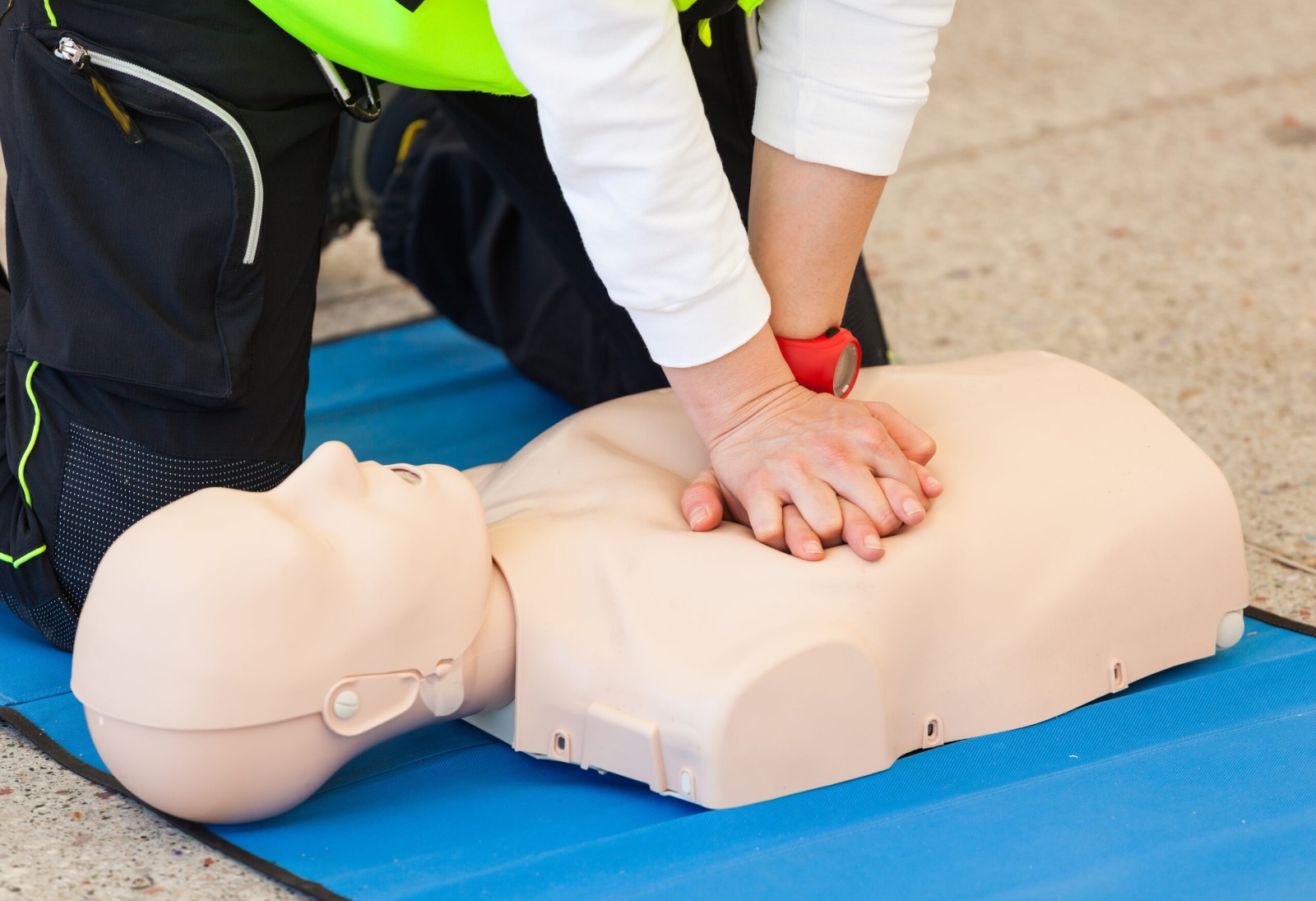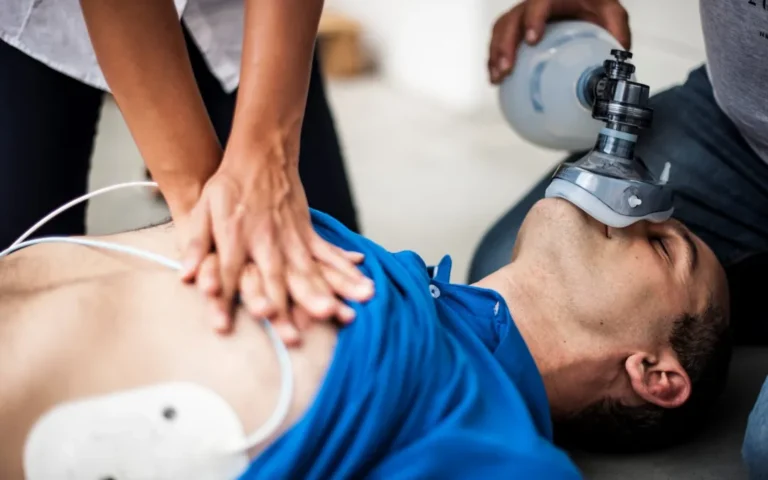Your CPR Certification Journey: A Step-by-Step Guide
Get trained in CPR courses and be ready for emergencies. CPR, or chest compressions and artificial ventilation, helps keep the brain working until breathing and circulation return to normal. Getting certified can help you advance your career, especially in the fitness industry. Having a CPR certification gives you a competitive edge in careers like personal trainer, group exercise instructor, and yoga or pilates teacher.
Being certified in a CPR course shows your ability to assist in any kind of emergency, providing you with the necessary information and confidence to react quickly. Obtaining certification is crucial, whether for personal safety or professional requirements. This guide simplifies the process of earning your CPR certification, making it simple and easy to navigate.
Understanding CPR: A life-saving skill
Definition: CPR is an emergency treatment provided when breathing or heart stops.
It involves:
- Chest Compressions: Pumping blood to important organs through the heart.
- Rescue Breaths: Delivering oxygen to the lungs.
Importance: During cardiac arrest, performing CPR immediately can double or triple survival rates.
Statistics: Every year in the United States, more than 350,000 cardiac arrests occur.
Benefits of Knowing CPR: Knowing CPR can save lives. It has many benefits in personal and professional life.
- Immediate Response: It’s critical to respond in the first few minutes after cardiac arrest. It improves survival and recovery chances.
- Higher Survival Rates: A society with more CPR-trained people is healthier. They’ve got better stability and survival rates in cardiac emergencies.
- Empowerment: Learning CPR provides people with the confidence to take action in an emergency.
7 Steps to Get Your CPR Course Certification
Getting certified in CPR is important because it prepares you with life-saving skills. Regardless of your profession, CPR course certification can be invaluable in critical situations. Here are seven steps to guide you through the process of obtaining your CPR course certification.
Step 1: Preparing for Your CPR Certification
- Research: Check different CPR certification courses available in your area.
- Select a Course: Choose a course that fits your schedule. Also meets your certification needs.
- Find a Training Provider: Look for certified organizations. You can also try local training centers that offer CPR courses with certification.
Step 2: Enroll in a CPR course.
- Registration: Select the CPR course and sign up.
- Provide necessary documentation: Prepare any required documentation, such as its identification or proof of qualifications.
- Pay Course Fees: Complete the registration process by paying its course fees, if applicable.
Step 3: Attending the CPR training course.
- Attend classes: Attend both theoretical and practical sessions of the CPR training course.
- Learn Key Skills: Get essential CPR skills, including chest compressions, rescue breaths, and the use of an Automated External Defibrillator (AED).
- Practice: Gain practical experience in CPR under the guidance of trained instructors.
Step 4: Preparing for the Certification Exam
- Study: Study course materials and guides provided during the training.
- Understand the Exam Format: Familiarize yourself with the format of the certification exam, which includes written and practical components.
- Ask for advice: Ask instructors to clarify difficult concepts or skills.
Step 5: Taking and Passing the Certification Exam
- Exam Day Preparation: Arrive early and ensure you’ve got all required materials, including identification.
- Written Test: Complete the exam by answering the written questions we’ve.
- Practical Assessment: Perform CPR procedures accurately under the guidance of an examiner. This showcases your knowledge and skills.
Step 6: After Certification – Next Steps
- Get a Certification Card: After the test, get your CPR card. It’s confirmed your CPR performing skills.
- Understand Certification Validity: Know when your certification expires and how to renew it.
- Consider advanced training: Check for opportunities for advanced CPR training or specialization, such as Advanced Cardiac Life Support (ACLS) or Pediatric Advanced Life Support (PALS).
Step 7: Staying Prepared and Updated
- Continuous Education: Stay informed about updates and developments in CPR guidelines and methods.
- Attend Refresher Courses: To maintain and improve your CPR skills, take part in refresher courses regularly.
- Be Ready to Respond: Knowing that your CPR certification allows you to save a life, be aware, and be ready to act in an emergency.
Common Challenges and How to Overcome Them
You might face many difficulties in your search for CPR course certification. The following are common obstacles and ways to overcome them:
- Finding the Right Course
Solution: Conduct thorough research, seek advice, and select a course that fits your needs and schedule.
- Balancing time commitments
Solution: Prioritize your training by creating a schedule. Allocate dedicated time for studying and attending classes.
- Understanding Course Material
Solution: Use the provided materials and join study groups. Ask teachers for help on hard topics.
- Gaining Practical Experience
Solution: Enhance your skills through regular practice during and after training. Seek feedback from instructors to improve your skills.
- Exam Anxiety
Solution: Use relaxation techniques to control your anxiety. Make sure you are well-prepared and familiar with the exam format.
- Maintaining Certification
Solution: Stay updated on the latest CPR guidelines. Set reminders for renewal deadlines. Also, consider taking advanced courses to develop skills non-stop.
By admitting and preparing for these challenges, you can pass your CPR certification. Then, you’ll be ready to handle emergencies.
To Sum Up
Getting your CPR certification gives you the needed life-saving skills. It also increases your confidence when quickly responding to emergencies. You can complete the certification if you follow the instructions and avoid common obstacles. CPR certification is useful for personal or professional use, making you a valuable asset in an emergency, ready to save lives.






